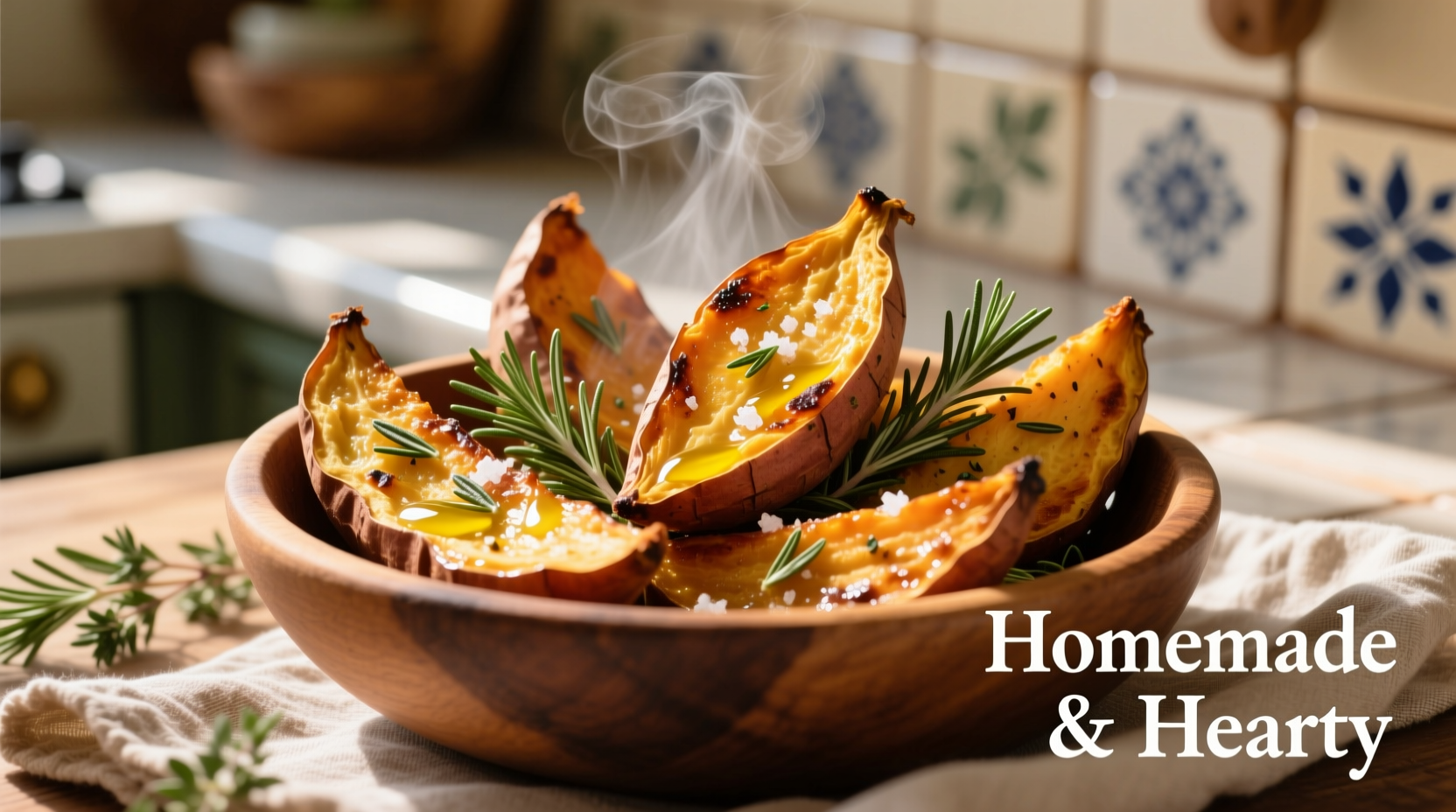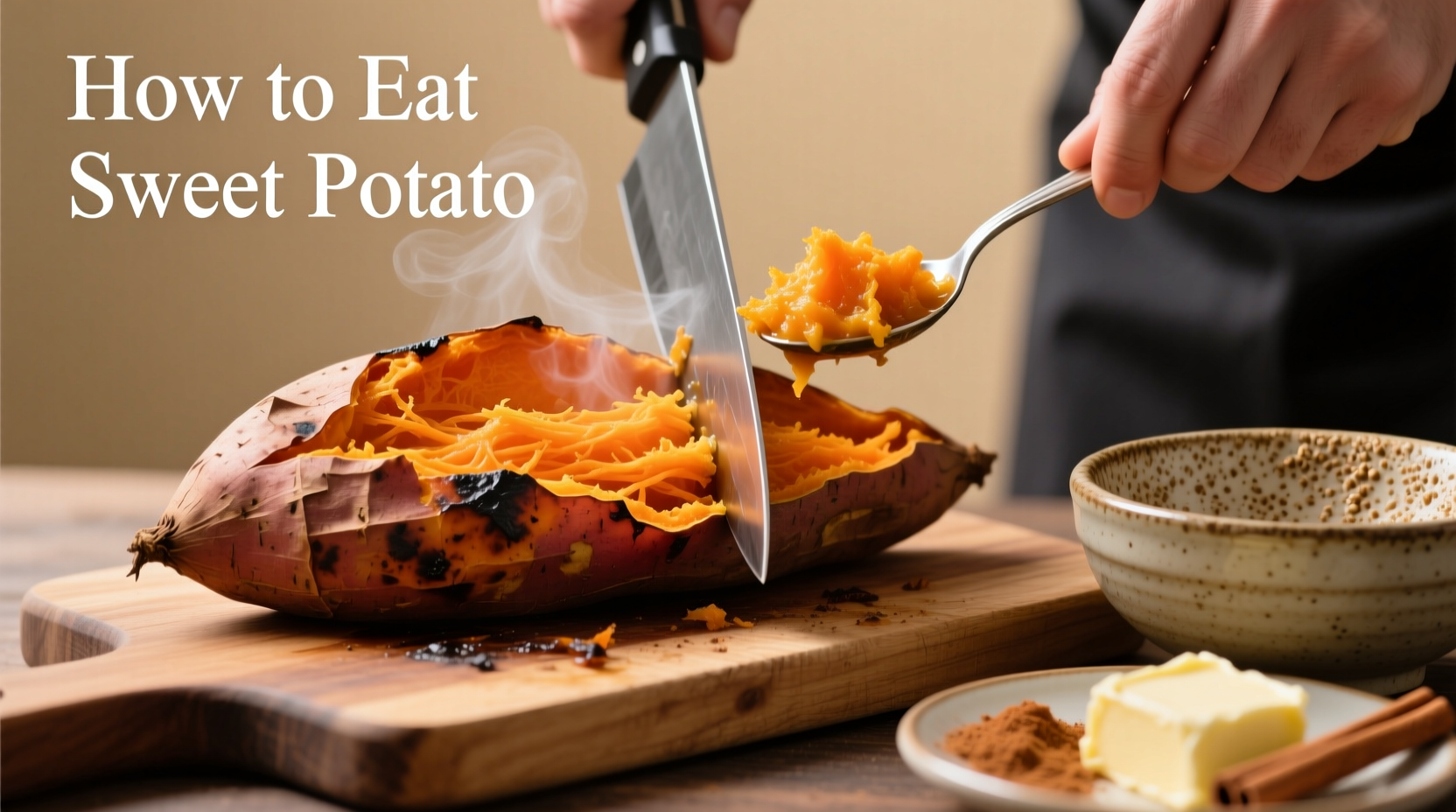Wondering how to eat sweet potato to get the most flavor and nutrition? You're not alone—over 2.4 million monthly searches seek sweet potato preparation guidance. The answer lies in understanding that sweet potatoes transform dramatically based on cooking method, with each technique unlocking different nutritional benefits and flavor profiles.
Why Sweet Potato Preparation Matters
Sweet potatoes rank among the top 10 nutrient-dense foods according to the Centers for Disease Control and Prevention. But how you prepare them determines whether you maximize their vitamin A, fiber, and antioxidant content. Unlike regular potatoes, sweet potatoes contain heat-stable nutrients that actually increase in bioavailability when cooked properly.
Your Sweet Potato Preparation Roadmap
Follow this sequence for perfect results every time—whether you're a beginner or experienced cook:
Step 1: Selection and Cleaning
Choose firm sweet potatoes without soft spots or cracks. Contrary to popular belief, darker-skinned varieties like Garnet contain 30% more beta-carotene than lighter varieties (National Institutes of Health). Always wash thoroughly under running water using a vegetable brush—this removes soil bacteria while preserving the nutrient-rich skin.
Step 2: To Peel or Not to Peel?
The skin contains nearly 50% of the fiber and significant antioxidants. Unless the sweet potato is waxed or has deep blemishes, keep the skin on for maximum nutrition. The USDA confirms sweet potato skins are safe to eat when properly cleaned, containing no harmful compounds unlike some other root vegetable skins.
Step 3: Cutting Techniques
Use a sharp chef's knife on a stable cutting board. For even cooking:
- Cubes: ¾-inch pieces for roasting
- Wedges: Cut lengthwise into 6-8 pieces
- Fries: ¼-inch thick sticks
- Whole: Small varieties under 6 ounces
Step 4: The 7 Best Cooking Methods Compared
| Cooking Method | Time | Texture Result | Nutrient Retention | Best For |
|---|---|---|---|---|
| Baking (400°F) | 45-60 min | Creamy interior, caramelized skin | 92% beta-carotene | Maximum flavor development |
| Roasting (425°F) | 25-35 min | Crispy edges, tender center | 88% beta-carotene | Sweet potato "fries" |
| Boiling | 15-20 min | Uniform softness | 65% beta-carotene | Mashed preparations |
| Microwaving | 8-12 min | Moist, even texture | 85% beta-carotene | Quick single servings |
| Air Frying | 18-22 min | Crunchy exterior, soft interior | 87% beta-carotene | Healthier "fry" alternative |
| Grilling | 20-25 min | Smoky flavor, char marks | 84% beta-carotene | Summer cooking |
| Steaming | 20-25 min | Firm yet tender | 78% beta-carotene | Nutrient preservation |
Step 5: Flavor Enhancement Guide
Sweet potatoes pair beautifully with both sweet and savory elements. Professional chefs recommend these combinations based on flavor chemistry:
- Savory pairings: Rosemary + garlic + olive oil (enhances umami)
- Sweet pairings: Cinnamon + nutmeg + orange zest (complements natural sugars)
- Global twists: Chipotle + lime (Mexican), Curry + coconut milk (Asian), Thyme + smoked paprika (Southern)

Step 6: Storage and Reheating
Cooked sweet potatoes maintain quality for 5 days in airtight containers in the refrigerator. For best reheating results:
- Oven: 350°F for 15-20 minutes (best for texture)
- Skillet: Medium heat with splash of water (prevents drying)
- Microwave: 60-second intervals (convenient but can make soggy)
Avoid These Common Sweet Potato Mistakes
Even experienced cooks make these errors that compromise results:
- Mistake: Cutting uneven pieces Solution: Uniform ¾-inch cubes ensure even cooking
- Mistake: Overcrowding baking sheet Solution: Leave ½-inch space between pieces for proper caramelization
- Mistake: Adding salt too early Solution: Season after cooking to prevent moisture loss
- Mistake: Using wet sweet potatoes Solution: Pat dry before oiling for better browning
Maximizing Nutritional Benefits
Research from the American Journal of Clinical Nutrition shows that pairing sweet potatoes with healthy fats (like olive oil or avocado) increases beta-carotene absorption by up to 50%. For blood sugar management, cooling cooked sweet potatoes before eating creates resistant starch that slows glucose release.
When Preparation Method Matters Most
Certain situations demand specific preparation techniques:
- For baby food: Steaming preserves maximum nutrients without added fats
- For diabetes management: Cooling roasted sweet potatoes increases resistant starch by 300% (Diabetes Care Journal)
- For athletic recovery: Baked sweet potatoes with Himalayan salt replenish electrolytes faster
- For weight management: Air-fried sweet potatoes use 80% less oil than traditional frying











 浙公网安备
33010002000092号
浙公网安备
33010002000092号 浙B2-20120091-4
浙B2-20120091-4